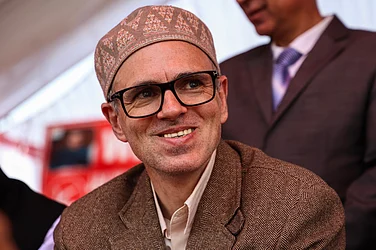India and China held "positive, constructive, and in-depth" discussions during the 19th round of military-level talks to resolve the stand-off in Eastern Ladakh on Sunday and Monday, said Ministry of External Affairs (MEA).
India and China have been lodged in a military stand-off in Eastern Ladakh since early 2020 when Chinese soldiers entered Indian territory and clashed with Indian personnel. The clashes led to warlike situations with India at one point deploying around 68,000 personnel in the region along with war-waging equipment such as tanks, artillery, and fighter planes. The situation as well as the India-China relationship nosedived after June 15 when 20 Indian soldiers were killed in Galwan Valley in Eastern Ladakh in clashes with the Chinese personnel.
In more than three years since the first clashes in May 2020, several rounds of military-, diplomatic-, and ministerial-level have taken place, but the stand-off has not yet been resolved in its entirety.
The MEA statement read, "The two sides had a positive, constructive and in-depth discussion on the resolution of the remaining issues along the LAC in the Western Sector. In line with the guidance provided by the leadership, they exchanged views in an open and forward looking manner.
"They agreed to resolve the remaining issues in an expeditious manner and maintain the momentum of dialogue and negotiations through military and diplomatic channels. In the interim, the two sides agreed to maintain the peace and tranquility on the ground in the border areas."
The Ladakh stand-off has driven the India-China relationship to their worst since 1962, when India and China fought a war that India embarrassingly lost. The Narendra Modi government maintains that peace and tranquility at the border is the basis of the bilateral relationship whereas the Chinese government wants to separate the border situation from the rest of the relationship.
On July 24, National Security Advisor (NSA) Ajit Doval met top Chinese diplomat Wang Yi on the sidelines of BRICS meeting in South Africa and a government statement quoted Doval as saying that the situation at the border "eroded strategic trust" and the public and political basis of the relationship. The statement further said Doval emphasised the importance of continuing efforts to fully resolve the situation and restore peace and tranquillity in the border areas so as to remove impediments to normalcy in bilateral ties, reported PTI.
Last month, the MEA said Prime Minister Narendra Modi and Chinese President Xi Jinping spoke on the need to stabilise bilateral relations at a dinner during the G-20 summit in Indonesia last year. The meeting went unacknowledged until last month's statement by the MEA.
In the meeting, it is understood that the Indian delegation was set to press for press for early disengagement of troops from the remaining friction points in Eastern Ladakh, reported PTI.
The Indian delegation at the talks are going to seek completion of the disengagement process in the remaining friction points at the earliest, said a source to PTI.
The disengagement is the first step in the restoration of normalcy in the region. Disengagement involves the withdrawal of soldiers, frontline fortification, and battle-equipment like tanks and armoured personnel carriers from the frontline. Once the soldiers locked eyeball-to-eyeball have disengaged, deescalation is the next step. Deescalation means the withdrawal of reserve troops and war-waging equipment like artillery, missiles, and fighter planes in the rear.
In the 18th round of military talks in April, the Indian pressed for the resolution of lingering issues at Depsang and Demchok.
Though the troops have disengaged from some places, around 50-60,000 troops from both the sides remain deployed in the region.


























